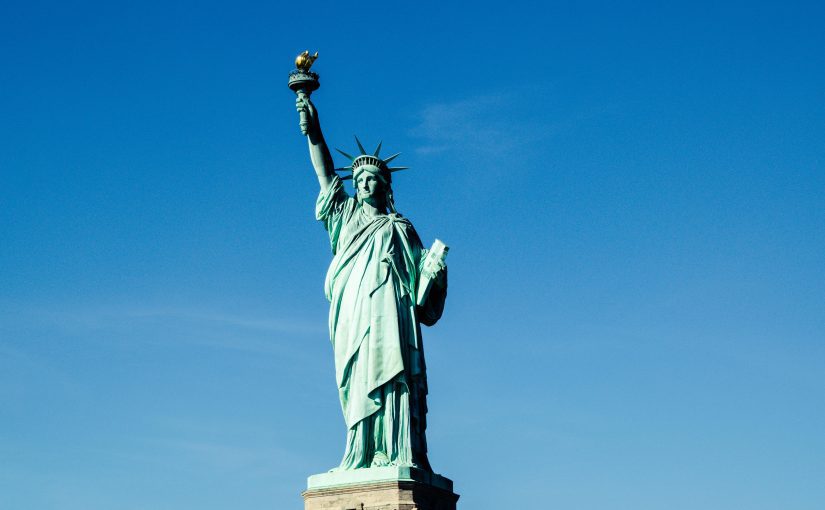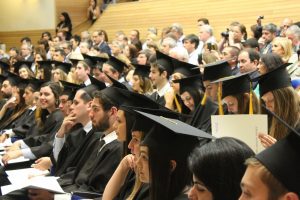
Millions of individuals arrive in and leave the United States every year. In fact, the US has more immigrants, especially from Mexico and Asia, than any other nation in the world. The US is certainly a popular tourism and immigration destination. Today, over 40 million individuals residing in the United States were born in another country, making up for about one-fifth (20%) of the world’s migrants.
If you want to travel to the US as a student or worker, you’ll need a US visa to enter the country. Depending on your reason or purpose of travel, you will likely need one of the immigrant visas or non-immigrant visas, such as a student visa. A US visa is simply a stamp that’s affixed on your travel document, specifically added to your passport, indicating that you’re eligible to enter the US on a temporary or permanent basis.
However, having a US visa doesn’t necessarily mean or guarantee that you will enter the States since this is at the discretion of two departments. The first is the US Department of Homeland Security (DHS), and the second is the Customs and Borders Protection (CPB) Inspectors!
Whether you are traveling to the United States of America for tourism, work, or education, this guide aims to simplify and streamline the US visa application process, from checking various requirements to getting that coveted US visa stamped on your passport.
Understanding US Visas
To smoothly enter the US and avoid any hassles later on, you must understand and secure the appropriate US visa type. We can separate the US visas into two main categories: non-immigrant visas and immigrant visas. A non-immigrant visa, such as a tourist visa, will only be valid for a specific period of time, like one month or three months. On the other hand, an immigrant visa will give you permanent residence.
One of the main benefits of knowing and understanding what the different kinds of US visas are is that you’ll be able to determine the one that’s most relevant to your current circumstances. This way, you can decide how to proceed. For example, the application process for a non-immigrant visa is usually substantially shorter than for an immigrant visa. The good news is that you can still pursue permanent residence while you’re in the States on a non-immigrant US visa.
What’s a US Visa?
Before we explore the different types of US visas, let’s get some basics out of the way. A citizen of any foreign country, such as France or Italy, who seeks to enter the US generally has first to get a US visa. It is a stamp that is placed in the traveler’s (your) passport, a standard travel document formally issued by your country’s government.
Did you know that certain international travelers, such as Australian and Japanese citizens, may be eligible to enter the US without a US visa (under the Visa Waiver Program (VWP)) if they meet all the requirements and conditions for visa-free travel?
Determine the Type of US Visa Needed
Before applying for a US visa, make sure you identify the US visa type (B1/B2 tourist visa or F student visa) that you require for your travel. And depending on why you are traveling, you must choose the right visa category. Applying for a US visa can be difficult and tricky to understand since the process differs considerably depending on the type of US visa you’re applying for.
For instance, in some circumstances and cases, you’ll be able to apply yourself. In contrast, other visa applications may require a US sponsor, like an employer or a family member, to submit a formal petition for entry to the US on your behalf. After that, you may have to submit more application forms on your own.
You must choose the right visa category since you’ll need to secure all the supporting documents, such as proof of finances or acceptance letters from educational institutions, pertinent to the visa type you choose when going for the visa interview. Ensure these documents are translated into English if they were initially issued in a different language.
US Visa Types
Whether you want to hike into the Grand Canyon or study at the prestigious Stanford University, you will need a US visa, and there are more than 180 types of United States visas, grouped into two primary categories:
Nonimmigrant US Visas
You will be issued a non-immigrant visa if you are temporarily visiting the US for business, tourism, employment, studying, or family visits. The type of non-immigrant visa required, such as a Business (B-1) Visa or Exchange Visitor (J) Visa, is determined by relevant immigration law and is often related to the reason or purpose of travel.
Immigrant Visas
These visas are issued to individuals who will permanently move to the US. It is ideal for people yearning to establish permanent residence in the US. Immigrant visas cater to aspiring residents looking to join family members or contribute to the US economy through various investment opportunities. What does the process of getting an immigrant visa entail?
In most cases, a US citizen or lawful permanent resident sponsor will file a petition with the US Citizenship and Immigration Services (USCIS) on behalf of the aspiring immigrant.
Visitor Visas
If you are looking to temporarily visit the US for tourism, business, or other purposes, you will benefit from a visitor visa. The visitor visa is issued to people who want to visit the United States for a short period, usually a maximum of six months. These visas are divided into:
- B-1 Visa (Business Visitor): If you intend to engage in business activities in the US, like attending conferences and seminars, negotiating contracts, or participating in short-term training programs, you will likely get this visa.
- B-2 Visa (Tourist Visitor): You should apply for this visa if you are seeking to visit the US for pleasure, including sightseeing in the mountains, visiting family and friends, or participating in recreational activities.
Student Visas
Each year, thousands of international students from all over the world apply to US schools and colleges to study full-time in the US. There are over one million international students studying in the United States, and with some planning, guidance, and preparation, you can also join them. The United States is home to some of the world’s leading and most prestigious institutions, from Stanford and Harvard to MIT and Princeton, as well as globally renowned sights, including the Statue of Liberty and the Grand Canyon.
However, to attend the best schools and universities in the United States, you’ll need more than merely good grades — you also need a United States student visa. So, before you can completely immerse yourself in that coveted US student experience and all it has to offer, it is essential to carefully follow the process for getting your US student visa.
- F-1 Visa: The US offers different types of visas for students, such as the F and M visas for academic and vocational purposes.The F-1 student visa is for students attending universities, high schools, colleges, seminaries, conservatories, and other academic institutions. It is a non-immigrant visa that allows you to enter the States and study at institutions or colleges the Student and Exchange Visitor Program (SEVP) has certified. You may know that F-1 is the most popular student visa type for students looking to study at a US college or university. However, keep in mind that you may only apply for your F-1 visa after your application is accepted by an accredited US institution.
- J1 Visa: You will need a J1 visa if you want to complete practical training or research in the US that isn’t available in your home country but which you have to complete to meet the requirements of your academic program. This non-immigrant visa allows foreign nationals and students to participate in various work-and-study-based exchange visitor programs.
- M1 Visa: If you are a student pursuing non-academic studies or vocational activities like flight schools, cooking classes, professional schools, or other vocational programs, this visa is right for you.
Temporary Work Visas
These US visas are usually issued for temporary work. Here are a few categories of work visas in the US:
- H1B visa: It is for individuals who are employed in highly specialized and technical fields.
- H1B1 visa: It is for Chileans and Singaporeans.
- H-2A visa: It is given to temporary agricultural and farm workers from selected countries with whom the US shares some type of interest.
- H-2B visa: It is granted to other kinds of temporary, seasonal employees who perform non-agricultural work.
Official and Diplomatic Visas
Here are some types of official and diplomatic visas:
- Foreign government officials: You may have heard of the A1 visa. It is for diplomats or foreign government officials and officers who are traveling to the United States on official duties and tasks or representing their government.
- Military personnel: Not intended for the general public, the A2 NATO1-6 visa grants entry and stay for military personnel assigned to NATO missions or headquarters in the US. This visa is only for foreign military persons who are about to be stationed or serve within the US. It can be renewed for as long as your military assignment continues.
- International organization workers: If you’ve been employed in a US-based international organization, you will have to obtain a G-1 to G-5 visa.
Immediate Relative and Family Sponsored Visas
Want to know about immediate relatives or family-sponsored visas? For lawful permanent residents (also known as green card holders) in the US looking to reunite with their family members, it is crucial to understand the F2A and F2B visa categories.
These visas cater to spouses, children, and unmarried offspring of green card holders, enabling them to immigrate to the US and establish permanent residency.
F2A Visas
- Issued to spouses and unmarried children under 21 years old of lawful permanent residents.
- Generally processed faster because of higher priority.
F2B Visas
- Issued to unmarried sons and daughters aged 21 and above of lawful permanent residents.
- Subject to longer processing times due to a quota system.
IR-2 visa is for unmarried children who are under 21, whereas IR5 visa is for parents of United States Citizens who are 21 or older. On the other hand, F1 is for unmarried daughters and sons and their minor kids.
Spouse and Finance Visas
If you are married to an American person, then you should look into these visa types:
K-3 Visa
This visa allows the spouse of a US citizen to enter the US temporarily while their permanent residency (green card) application is being processed. This visa is intended for couples who marry outside the US and provides an opportunity to live together while awaiting the green card decision.
IR-1 Visa (Immediate Relative Visa)
This visa is for the spouse of a US citizen who is already a green card holder. It allows the spouse to immigrate directly to the US and obtain permanent residency upon arrival. However, keep in mind that processing times tend to be quicker compared to the K-3 visa option.
CR-1 Visa (Conditional Resident Visa)
Similar to the IR-1 visa, this option allows the spouse of a US citizen who is a green card holder to immigrate directly to the US. However, there are some considerations. The CR-1 visa comes with a conditional status that requires filing another petition to remove the conditions after two years of marriage.
This option is typically chosen when the couple has been married less than two years before the application process begins.
Gathering Required Information for Your US Visa Application
Based on the type of US visa you intend to apply for, you’ll have to gather all relevant forms and documents to complete your online US visa application. Here is a list of some common documents and important information that you will need; no matter the type of visa application you want to complete online (DS-160 form).
- Your personal contact details
- Passport
- Information pertaining to your parents, spouse, and children
- Information about your current occupation
- Work experience or history
- US travel itinerary
- Your educational history
- Information about who (parents or employer) will pay for your trip to the US.
- A clear digital passport photograph with a white background.
If you belong to a non-English-speaking country, then ensure your docs are in English. You may reach out to certified translators online to sprinkle the magic of Lingua Franca on your paperwork.
Fill Out and Submit the DS-160 Form
The next step is to complete the DS-160 form online. If you’re applying for an immigrant US visa, it is imperative to complete the DS-260 form. For non-immigration visas, such as a visitor visa, work visas, student visas, or dependent visas, follow these steps:
- Visit Non-immigrant US Visa Application
- Now select the location from where you intend to apply for a US visa
Once you complete this step, you’ll be provided with an application ID. Make sure you note this ID down or print it. This way, you may use it to go back and fill out the application later.
A Step-by-Step Process of Applying for a US Visa
Here is a very simple and straightforward way to apply for your US visa without hassle. Follow these simple steps carefully, and you can catch your next flight to New York in no time.
Pay the Visa Fee
After completing Form DS-160, you have to pay the MRV or Machine Readable Visa fee. It can range from $160 to $265 based on your chosen visa type. You’ll pay this fee online to put your visa application in process.
Schedule your Interview
The next stage is seemingly straightforward, but your future in the US depends on it, i.e., the much-dreaded visa interview. You actually have to set up two separate interviews, one for biometrics and the other for the said interview.
Prepare the Documents
At this stage, you will gather all the documents necessary to bring your visa application close to approval. Ensure you have made at least two photocopies of every document. Also, hire ATA-certified translators to convert your non-English documents into English.
Attend the Two Interviews
All you have to do now is to show up for your biometrics appointment and visa interview. Go to your nearest consulate, and a consular officer will probably conduct the interview session. They mostly ask questions about your intent to travel to the US and how long you plan to stay in their country.
Just answer all questions confidently, truthfully, and to the best of your knowledge.
Check Visa Status Online
Keep checking the status of your visa application online. Usually, it can take a couple of days to several weeks for your visa application to be approved. Then you just have to collect the approved visa and prepare for your trip to the greatest country in the world!
Conclusion
Now, you understand how to get a US visa and continue your work/education journey in the Land of the Free. Determine which visa type is more suitable to you based on your unique circumstances. Then apply for a visa through the proper channel and submit all the necessary documents for speedy approval. It’s equally important to find certified translators to convert your docs into English.
If you are planning to apply for a US visa from a non-English-speaking country, contact TranslateSwift for credible, error-free, and 100% guaranteed approval translation.
TranslateSwift offers translation services in 120+ languages and can deliver the finished product along with a translation accuracy certificate in just 24 hours. So, order your translation now!
FAQs – How to get a USA Visa?
Who can Sponsor me for a Work Visa in the US?
Your relatives or friends can’t sponsor your US work visa, unfortunately. Only your employer can sponsor it so ensure you have the right sponsorship when planning your next trip to the US.
Do I have to reapply for a Visa if Only Passport has Expired?
No, if your visa is valid and only the passport has expired, you can still travel to the United States. Ensure it’s the right visa type of visa for your main purpose of traveling to America.
Do I Qualify for the Visa Waiver Program
You can easily find this information on any official website where they have put up a list of all eligible countries. Or, read this TranslateSwift article to understand how the VWP and the ESTA work.
Who can reverse a Consular Officer’s Decision?
By law, consular officers have the final say when it comes to visas-related issues. Only the State Department has the authority to reverse a consular officer’s decision but it rarely ever happens.
How do I Prove Strong Ties to the US?
Unless you have a second home in the United States, you can prove strong ties to the country by showing that you have a job in America or you are already living there.










